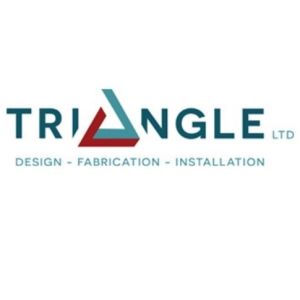Three Stages of Structural Steel FabricationPosted by Triangle Limited on August 23rd, 2022  This article was genuinely published here and copied with permission. At a glance over a steel beam, the day starts at a blueprint, and repeatedly, you are trying to get it in your head about the details that are supposed to be located on the Structural Steel fabrication work piece that might draw you close. Structural steel fabrication is supposed to be the bending, cutting, and assembling of steel, creating different products. Several steel pieces are combined at the time of steel fabrication, forming different predefined shapes and sizes intended to build them into industrial equipment, building tools, and other various final products. Steel fabrication is one of the unique skills that require transforming experiences with raw components into products to meet or exceed different codes and standards. Structural steel fabrication stages: 1. Cutting structural steel Steel fabricators cut the structural steel through sharing and sawing with various tools, including plasma torches, laser cutters, and water jets. Cutting the steel by fabricators is the first step that is typically done in the closed manufacturing facility and an abundant safety precaution to protect the workers. 2. Bending structural steel Bending the steel by fabricators is the second step to turning the alloy. The fabricators use a hammer for steel manually and use machines for fabrication. The decision of bending is typically based on how much steel they need to bend simultaneously. The bending depends on the project's needs for repetitive bending. The more structural steel fabricators need to repeat the bending, the more they rely on machinery. 3. Assembling structural steel Assembling the steel is the final step to structuring the steel involves the combination of different steel parts together. Assembling may be done usually by welding with the heat applicable to steel parts to join them together slowly, but at the same time, pieces can be tied up or bound together with a rivet or adhesive constructions. While shaping the steel pieces into a structure, the fabricators use equipment and designing software to supervise the project. There are more steel sections within the production facility, and it only assembles on-site afterward regardless of the industry. Furthermore, there are many benefits or advantages to incorporating structural steel construction based on the projects and other projects. Still, the products can be complex and demanding for experienced structural steel fabricators' successful teams. On the other hand, the structural steel fabrications have some benefits that are prone to make it a successful endeavor for the steel fabricators compared to the other metal options. In contrast, steel is more robust and cheaper at the same time. In construction or other industries, the steel structures may arrive at the prefabrication phase and be fabricated at the site. The metals other than steel may need higher maintenance. Meanwhile, steels are easily repairable, and they last longer. Steel is environmentally friendly as it can be reused or recycled while at the same time, it requires less energy to generate and produce less carbon dioxide. “Triangle Limited” fabricates a different range of steel with steel stair fabricators and products with exact requirements based on customers' needs offering the services related to steel fabrication. To get further details, visit at Triangleltd.co.uk. Like it? Share it! |


